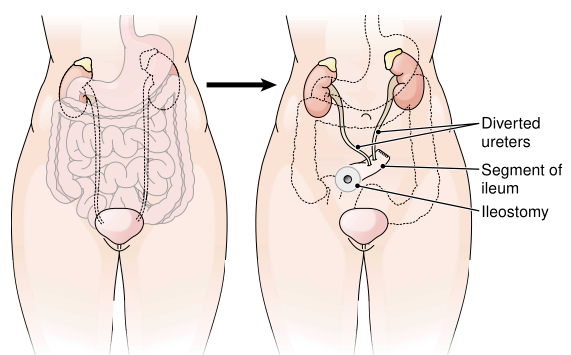Carcinoma of the bladder has been linked to occupational exposure to chemicals, parasitic infections, and cigarette smoking. A key symptom is sudden, painless hematuria. Often the cancer can be seen by viewing the lining of the bladder with a cystoscope. This instrument can also be used to biopsy tissue for study. If treatment is not effective in permanently removing the tumor, a cystectomy (removal of the bladder) may be necessary. In this case, the ureters must be vented elsewhere, such as directly to the surface of the body through the ileum in an ileal conduit (Fig. 1), or to some other portion of the intestine.
Cancer may also involve the kidney and renal pelvis. Additional means for diagnosing cancer and other disorders of the urinary tract include ultrasound, computed tomography scans, and radiographic studies such as intravenous urography, also called intravenous pyelography, and retrograde pyelography.

FIGURE 1. Ileal conduit.
责任编辑:admin
上一篇:医学文章阅读——Pituitary
下一篇:医学文章阅读——Methods to Measure Exposure to House-Dust Allergens

微信公众号搜索“译员”关注我们,每天为您推送翻译理论和技巧,外语学习及翻译招聘信息。